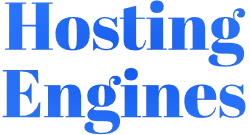What are Meta Tags?
Meta tags are snippets of text that describe a page’s content; they don’t appear on the page itself, but only in the page’s code. Think of them as a “behind the scenes” description for each of your web pages. These tags are crucial for search engines to understand what your content is about and thus, serve as a communication tool between your website and search engines. Common types of meta tags include the title tag, which defines the title of a web page, and the description tag, which provides a brief overview of the page’s content.
Why Meta Tags Are Important?
- Improve SEO Rankings: Meta tags help search engines understand your content better, which can influence your website’s rankings in the search results.
- Enhance Click-Through Rates (CTR): A well-crafted meta description can entice users to click on your link in the search results, thus improving your site’s CTR.
- Social Media Engagement: Tags like Open Graph (used by Facebook) and Twitter Cards data enhance how your content is displayed on social platforms, potentially increasing engagement and traffic.
What is the Meta Tags Analyzer Tool?
The Meta Tags Analyzer Tool extracts and displays the meta tags of a given URL. This tool provides the users with a detailed insight into their own or competitors’ meta tags, enabling them to understand better how well their pages are optimized for search engines and social media platforms.
How to Use HostingEngines Meta Tags Analyzer?
- Enter the URL: You’ll find a simple form where you can input the URL of the webpage you want to analyze.
- Analyze the Meta Tags: After entering the URL, click the “Check Meta Tags” button. The tool will then fetch the webpage and extract the meta tags from its HTML code. This process involves sending a request to the specified URL, retrieving the page content, and parsing the HTML to identify meta tags.
- Review the Results: Once the analysis is complete, the tool will display the results in an organized table format. This table will include the names and contents of all meta tags found on the webpage, such as the title tag, meta description, and any other meta tags that provide information to search engines and social media platforms.
- Interpret the Findings: With the data presented, you can see how well the webpage is optimized for search engines and social media.
- Implement Changes: Based on the analysis, make necessary adjustments to your webpage’s meta tags. This might be refining the title and description, adding missing social media tags, or adjusting the robots meta tag to optimize for search engines and user engagement.
Benefits of the Meta Tags Analyzer Tool
Utilizing a Meta Tags Analyzer Tool comes with several advantages:
- Comprehensive Analysis: It offers a detailed view of all meta tags used on a webpage, including titles, descriptions, social media tags, and more.
- Competitive Insights: By analyzing competitors’ meta tags, you can gain insights into their SEO strategies and identify areas for improvement in your strategy.
- Time Efficiency: Manually checking a website’s meta tags can be time-consuming, especially for large sites. The analyzer tool automates this process, saving valuable time.
Meta Tags Best Practices
To maximize the effectiveness of the Meta Tags Analyzer Tool and ensure your meta tags are optimized for SEO and user engagement, consider the following best practices:
- Title and Description Tags: Ensure they are compelling, include relevant keywords to improve your visibility in search results, and are within the recommended length.
- Keep Descriptions Concise: Meta descriptions should be compelling and concise, ideally between 150-160 characters, to ensure they are fully displayed in search results.
- Robots Meta Tag: Check for directives that control search engine crawling and indexing.
- Social Media Tags (Open Graph and Twitter Cards): Verify that they are present and correctly configured to enhance sharing on social platforms.
- Optimize for Social Sharing: Utilize Open Graph and Twitter Card tags and verify that they are present and correctly configured to control how your content appears when shared on social platforms.
- Monitor and Update Regularly: Regularly use the Meta Tags Analyzer Tool to review and update your meta tags as needed.


